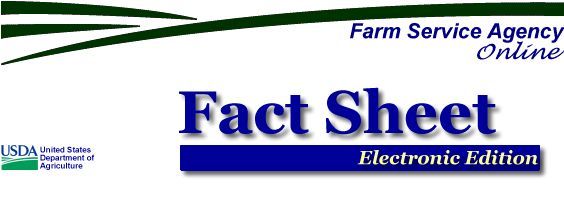
| March
2001 Debt for Nature Program Background The Debt for Nature Program (DFN), also known as the Debt Cancellation Conservation Contract Program, is available to persons with Farm Service Agency (FSA) loans secured by real estate. These individuals may qualify for cancellation of a portion of their FSA indebtedness in exchange for a conservation contract with a term of 50, 30, or 10 years. A conservation contract is a voluntary legal agreement that restricts the type and amount of development that may take place on portions of a landowner’s property. Contracts may be established on marginal cropland and other environmentally sensitive lands for conservation, recreation, and wildlife purposes. How DFN Works All FSA borrowers who have loans secured by real estate are eligible if they have land that qualifies for a conservation contract. This includes both borrowers who are current on their payments as well as those who are experiencing difficulty in keeping their loans current. A conservation contract may be considered alone or in conjunction with FSA’s primary loan servicing programs or new loans which are secured by real estate. By participating in this program, borrowers reduce their FSA debt thereby improving their overall financial stability. Borrowers can conserve wildlife habitat and improve the environmental and scenic value of their farms. Eligible lands include the following types:
Contract Process FSA will determine if the borrower is eligible and establish a contract review team. This team, consisting of representatives from FSA, the Natural Resources Conservation Service (NRCS), the U.S. Fish and Wildlife Service, and interested State, local, and nonprofit conservation agencies, will work with the prospective borrower to conduct a field evaluation of the farm. Within 30 days of the site review, the team provides a report to the county FSA official indicating the following:
FSA evaluates the contract review team’s report to determine if a conservation contract can be established on the farm in exchange for debt reduction. Cancellation of Debt In general, the maximum amount of a borrower’s FSA debt that can be canceled is calculated by considering the present market value of the farm; the borrower’s FSA debt secured by real estate; and the number of acres to be covered by the contract. For borrowers who are up to date on their loan payments or receiving a new loan secured by real estate, no more than 33 percent of the loan principal can be canceled in exchange for a contract. For delinquent borrowers, the amount of debt canceled may surpass this amount provided it does not exceed the appraised value of the land on which the contract is placed. Conservation contracts can be used in conjunction with other FSA primary loan servicing options available to delinquent and financially distressed borrowers. Contract Establishment Costs FSA will cover the costs of all surveys, appraisals, and recording fees associated with the conservation contract. However, the borrower must obtain written consent to the terms of the conservation contract from all prior and/or junior lienholders, if applicable. Terms and Conditions The term of a conservation contract may be either 50, 30, or 10 years. In general, the following activities are prohibited:
The borrower retains the right to control public access to the contract area and may use the area in a manner compatible with the contract (e.g., hunting and fishing, if allowed by the management plan). Access to the contract area must be provided to FSA for enforcement purposes. For More Information Contact local FSA or NRCS offices or USDA Service Centers. Information may also be obtained from the FSA web site at: www.fsa.usda.gov
|
|
|
|
The U.S. Department of Agriculture (USDA) prohibits discrimination in all its programs and activities on the basis of race, color, national origin, gender, religion, age, disability, political beliefs, sexual orientation, and marital or family status. (Not all prohibited bases apply to all programs.) Persons with disabilities who require alternative means for communication of program information (braille, large print, audiotape, etc.) should contact USDA’s TARGET Center at 202-720-2600 (voice and TDD).
To file a complaint of discrimination, write USDA, Director, Office of Civil Rights, Room 326-W, Whitten Building, 1400 Independence Avenue, SW, Washington, D.C., 20250-9410, or call (202) 720-5964 (voice or TDD).
USDA is an equal opportunity provider and employer.

[ Return
to Fact Sheet Index | FSA Home Page
| Comments | USDA
Home Page ]